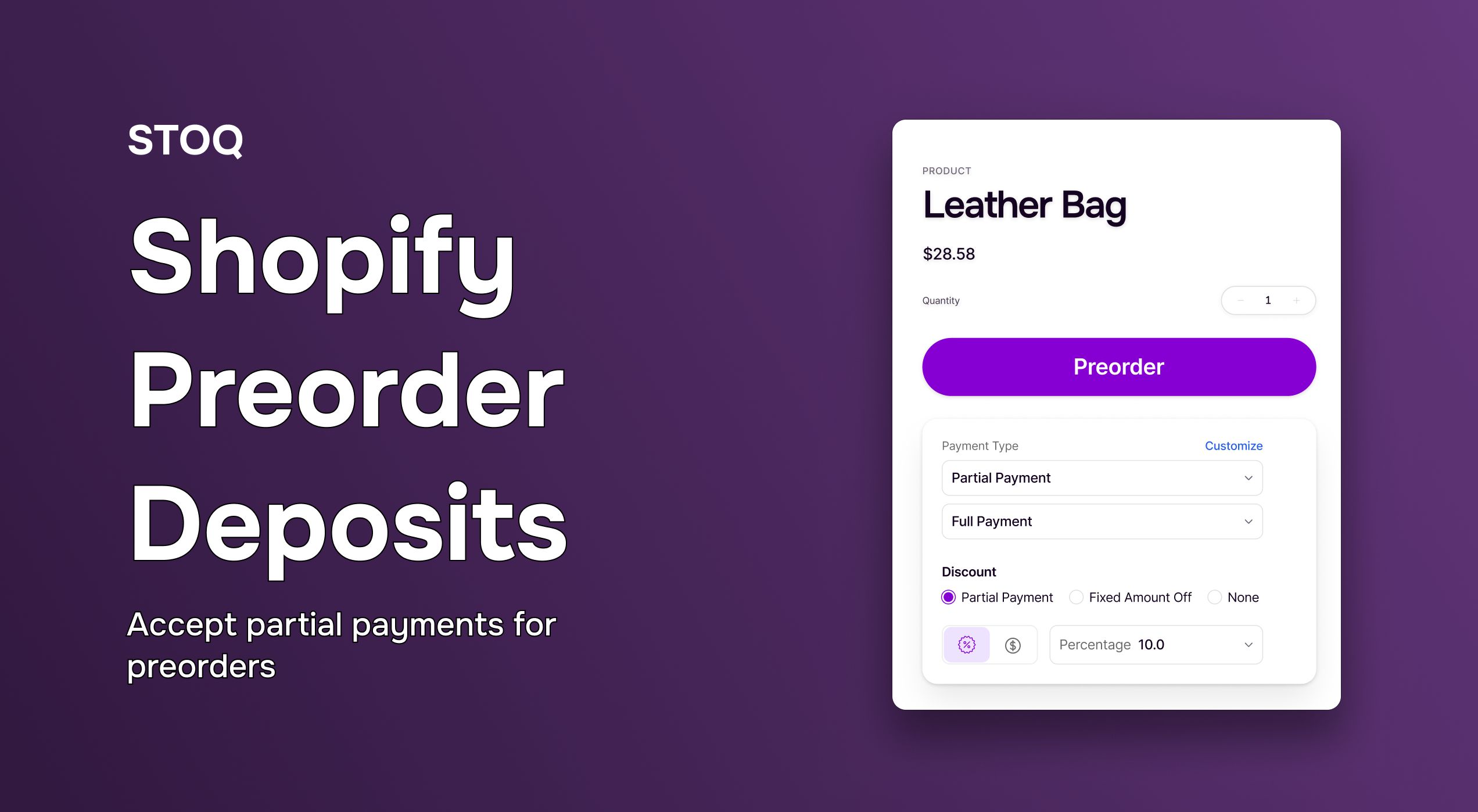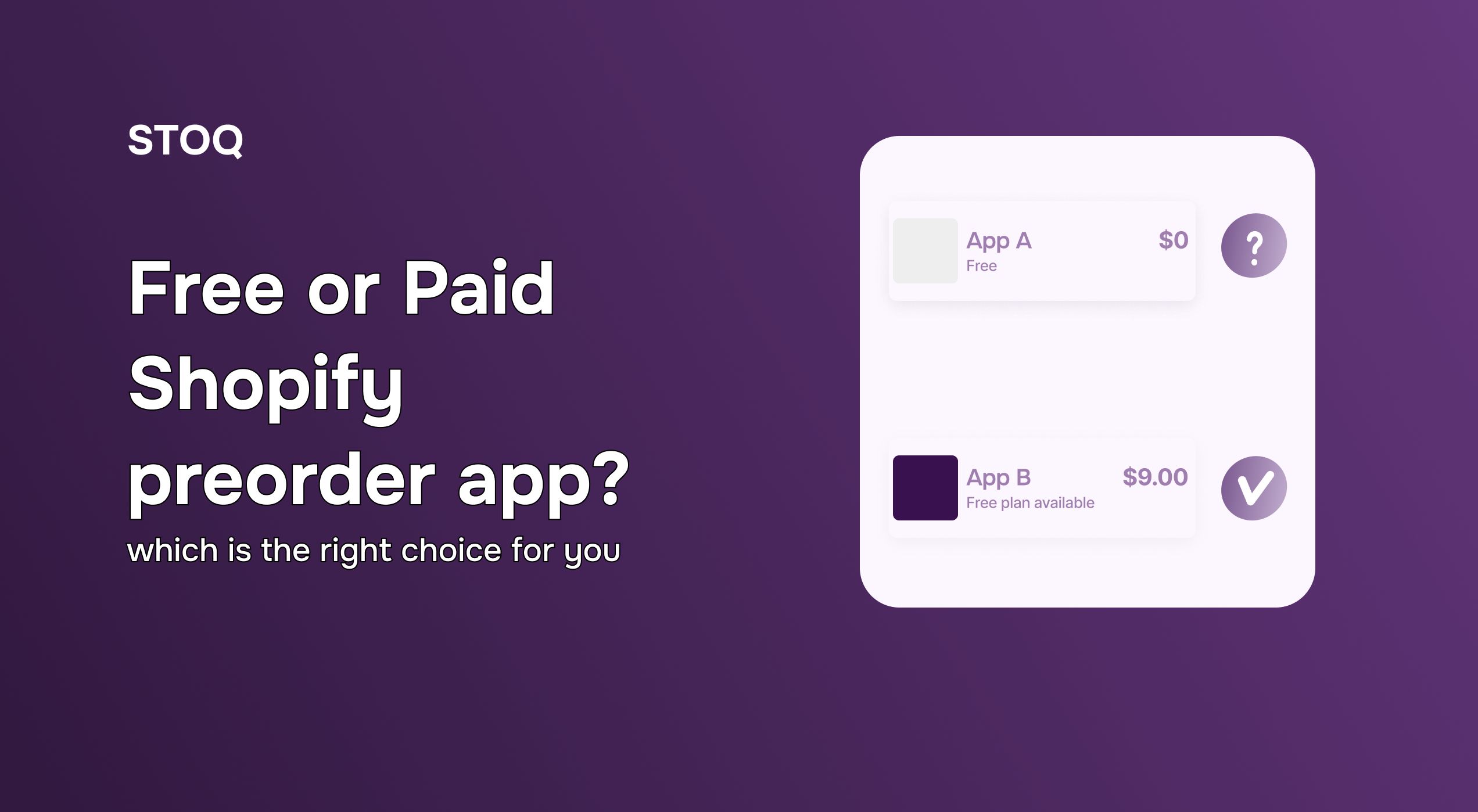Recover Revenue With Waitlists: How STOQ Captures Missed Demand

Every time a product goes out of stock, you disappoint those customers who couldn’t get their hands on it, and for you, a lot of money is left behind on the table.
In eCommerce, stockouts = missed demand = lost revenue. It’s simple math and the result is always painful.
That’s where waitlists come in. A waitlist lets shoppers register interest in out-of-stock items, so you don’t lose them to competitors. It turns a dead end into a second chance.
This is where STOQ comes in, a smart waitlist solution built to help you capture that missed demand and recover lost revenue. Instead of accepting stockouts as lost sales, STOQ turns product unavailability into a powerful growth lever. How? We discuss exactly that in this blog.
We’ll break down how STOQ helps you build waitlists that actually convert, create urgency, and drive repeat purchases, all while keeping your brand top-of-mind, even when inventory runs dry.
Let’s dive right in!
What Are eCommerce Waitlists?
An eCommerce waitlist lets shoppers raise their hand when something they want is unavailable. Whether it's an out-of-stock best-seller or an upcoming drop, customers can sign up to be notified the moment it’s ready, no need to keep checking back.
There are a few types of waitlists you’ll see in online stores:
- Back-in-stock waitlists: For items that are temporarily sold out. Shoppers join to get an alert when inventory is replenished.
- Preorder waitlists: For upcoming or presale items. These help brands gauge demand before launch and create buzz.
Why do shoppers opt in? Simply because they’re interested. Whether it’s the intent to buy, curiosity about new collections, or just good old FOMO, waitlists tap into genuine purchase intent.
It’s one of the clearest signals a shopper can give. And when used right, it’s gold for retention, forecasting, and conversions.
Why Most Stores Miss Out on Waitlist Revenue
The idea of a waitlist isn’t revolutionary; it’s the execution that fails. Most brands don’t realize just how much revenue slips through the cracks simply because they haven’t built a process to capture it. The truth? Shoppers want to stay connected. But when stores give them a dead end, they bounce.
Here’s where the gaps show up:
1. Stockouts typically mean dead ends
Most stores treat “out of stock” as the end of the customer journey. No option to save the sale, no way to express interest, just a grayed-out button and a missed opportunity. That’s not just bad UX; it’s lost revenue.
2. No “notify me” or “preorder” buttons
Shopify doesn’t offer built-in waitlist tools, so unless you’re using an app like STOQ, you’re missing out. Many stores forget to add these CTAs, meaning there's no easy way for a customer to raise their hand.
3. Lost traffic = lost revenue
According to Statista, eCommerce businesses lose a potential revenue of $18 billion due to abandoned carts in a year. A significant portion of this is due to the product in the cart being out of stock. We also know that returning traffic is 2–3x more likely to convert. Without a waitlist, you’re not just losing one sale; you’re losing repeat revenue potential.
4. Poor Visibility = Increased Churn
When customers can’t express interest or join a list, they feel forgotten. That lack of visibility and engagement causes them to turn to competitors, especially if they find a similar product elsewhere with better availability. Waitlists are as much about retention as they are about convenience.
Bottom line: the tech exists. The intent is there. But unless you capture it, you’re bleeding revenue every time an item goes out of stock.
How STOQ’s Waitlist Features Help Recover Revenue
STOQ converts your stockouts from a dead end into a high-converting funnel. Instead of letting customer intent fade, it captures and converts it without any friction. Here's how STOQ’s purpose-built waitlist features help you win back lost revenue:
1. Automated waitlist capture
When an item is out of stock, STOQ automatically adds a “Notify Me” button to the product page. Shoppers can join the waitlist with just one click via email or SMS, no login or form-filling needed. It's seamless, fast, and friction-free. You stop losing traffic. They stop losing interest.
2. Preorder + waitlist in one widget
Not sure if you're restocking or going straight to preorder? STOQ’s widget smartly offers both options when relevant, so you can convert shoppers depending on where the inventory stands. This flexibility means you don’t have to choose between capturing interest and capturing revenue. You get both.
3. Real-time alerts when stock returns
As soon as an item is restocked, STOQ sends instant alerts via SMS or email to all customers on the waitlist. And this process is entirely automated. These notifications bring shoppers back while they’re still interested and because they asked for it, conversion rates are often higher than cold traffic.
4. Custom messaging & brand control
Your brand tone matters even in a waitlist. With STOQ, you can customize the CTA button, email/SMS text, and even the design of your alerts. Want to localize the message or use product-specific language? It can easily be done. STOQ makes sure your messaging feels native and not generic.
5. Advanced features that drive revenue
STOQ goes beyond basic notifications with revenue-driving tools:
- VIP waitlists for loyal customers or high-demand drops
- Reminder nudges for subscribers who don’t convert on the first alert
- Conversion analytics that show which products, messages, and timing work best
Together, these features make STOQ more than a waitlist tool. It’s a comprehensive revenue recovery engine across the full funnel. From click to conversion, every step is optimized to bring customers back and close the sale.
The Revenue Impact of STOQ’s Waitlist System
Waitlists aren’t just a lead capture gimmick; they’re a proven revenue channel. According to STOQ’s Q1 2025 data, over 909,000 shoppers joined waitlists through the platform, leading to a whopping $6.7 million in recovered revenue via restock alerts alone.
The reason why it happened is high intent. Shoppers who opt into a waitlist want the product, and they don’t want to forget about it, so they sign up for the alert. And the result is just the aftermath of high-intent shoppers getting the chance to order what they wanted. Restock purchases driven by STOQ average over $144 AOV, proving these aren't impulse buys, but planned, high-value conversions.
Another major driver of success: multi-channel notifications. Stores that used both email and SMS saw a 26% return rate, significantly higher than using email alone. When done right, a waitlist creates a warm, ready-to-buy audience.
With STOQ, stores are unlocking a high-converting sales channel. In a world where attention is fleeting and CAC is climbing, this kind of performance is much needed for eCommerce brands.
Waitlists in Action: Use Cases Across Industries
Waitlists aren’t a one-size-fits-all solution. They adapt to your industry and product type. Whether you’re in fashion or electronics, STOQ’s flexible waitlist system helps you stay connected with high-intent shoppers and convert stockouts into sales.
Here’s how different industries are using waitlists to drive revenue:
1. Fashion & Apparel
In fashion, variants like size and color go in and out of stock constantly. Let’s say your best-selling black oversized hoodie is available, but size S sells out (for some reasons it happens a lot). Instead of leaving shoppers frustrated, STOQ’s “Notify Me” button lets them opt into restock alerts for that exact size, kinda like how H&M and Uniqlo do it.

When inventory is replenished, they get an alert and are ready to buy. This reduces churn and improves sell-through for previously missed opportunities.

2. Beauty & Skincare
Serums, moisturizers, and limited-edition collections often go viral on Instagram and then out of stock. STOQ helps skincare brands capture demand for those sold-out products by building email and SMS waitlists, keeping interested shoppers warm.
When your top-selling Vitamin C serum is back, a simple alert can lead to a surge in conversions from customers who were already sold, just waiting for the green light.
3. Electronics
In consumer tech, restocks aren’t just about supply, they’re often tied to manufacturing decisions. STOQ allows electronics brands to combine pre-orders and waitlists, so when customers show interest in an upcoming tablet or controller, you can gauge real demand early. This not only drives hype but gives you production confidence, knowing the next batch already has an audience waiting.
4. Seasonal & Limited Drops
For brands that drop exclusive collections, collabs, or holiday specials, timing is everything. With STOQ, you can open a waitlist before the product even launches, letting shoppers opt in for early access or restock notifications. Whether it’s a Halloween-themed candle or a summer sneaker collab, you’re building anticipation and creating urgency before the drop even hits.
How to Add a Waitlist Button with STOQ (Step-by-Step)
Setting up a waitlist with STOQ takes just a few minutes. Here’s a simple, step-by-step guide to start capturing high-intent demand the smart way:
Step 1: Install STOQ from the Shopify App Store
Head to the Shopify App Store and search for “STOQ.” With one click, you can install the app and start enabling waitlists across your store. STOQ is designed to work out of the box, no coding required.
Step 2: Choose “Notify Me” or “Preorder” Setup for Each Product
Inside the STOQ dashboard, you can easily toggle between “Notify Me” for out-of-stock items and “Preorder” for upcoming launches. Choose per product or variant depending on your inventory status. For example, use "Notify Me" for sold-out sizes and "Preorder" for new arrivals that haven’t launched yet.
Step 3: Customize Widget Look, Copy, and Placement
Make sure the widget matches your brand. STOQ lets you customize button text, email/SMS copy, colors, and fonts. Want the button on product detail pages (PDPs), collections, or even the homepage? You can do it all. You can also localize the language or tailor it for specific drops, like “Notify Me When This Shade Returns” for beauty brands or “Join the Drop” for streetwear.
Step 4: Connect to Klaviyo or Your SMS Platform
If you use Klaviyo for back-in-stock alerts, Attentive, Postscript, or another messaging platform, you can integrate STOQ directly. This lets you keep your communications streamlined, segment waitlist shoppers, and trigger branded flows within your existing campaigns.
Step 5: Monitor Signups and Conversions via STOQ Analytics
Once live, STOQ gives you access to a dedicated analytics dashboard. Track waitlist signups, restock conversions, AOV, and more. See which products generate the most demand and adjust restock or reorder plans accordingly. You can even segment high-intent shoppers for future launches.
How Waitlists Improve Forecasting & Inventory Planning
Every signup gives you a real-time signal of what shoppers actually want, helping you plan with confidence.
Here’s how STOQ’s waitlists support Shopify inventory management:
- Waitlist signups = real-time demand data: See exactly which products (and even which variants) customers are waiting for.
- Smarter reordering decisions: Use signup volume to determine how much stock to bring back, reducing the risk of overstocking or underordering.
- Helps allocate inventory across locations or channels: If certain SKUs are in higher demand in specific regions, you can plan your distribution accordingly.
- Supports pre-launch forecasting: For unreleased or seasonal items, waitlist data helps gauge interest before you invest in large quantities.
- Reduces dead stock and storage costs: You're only restocking what people are asking for, cutting waste, and improving margins.
- Grows your email/SMS list with high-intent shoppers: Use this list to segment and retarget for future launches, exclusive drops, or early access campaigns.
Conclusion
Waitlists help Shopify merchants turn missed sales into growth opportunities. With STOQ, you can easily recover lost revenue, retain high-intent customers, and make smarter inventory decisions, all from a simple “Notify Me” button.
Whether you’re dealing with stockouts or gearing up for a presale, waitlists bridge the gap between demand and delivery.



.jpg)